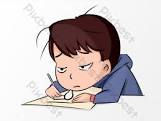Summer Learning School 2020
- Carrie Powers

- Sep 8, 2020
- 4 min read
This past July I ran my first learning pod summer program for a group of 6 students in Toronto. For people that are not in education circles, a learning pod is a new term that has arisen as a result of COVID 19, where a teacher will educate a small group of children in a safe, home environment. This past spring I had the pleasure of learning how to reach my students one-on-one every day working online. Since Toronto was in lock down until June, I was excited to teach a larger group of children once again in July! The learning pod consisted of 5 gr. 3 students and one gr. 4 student. They all knew each other and I personally knew two of the students well. A recipe for success in my opinion. I taught 3 lessons a day from the Ontario Curriculum that focused on three subject areas; language arts, math and science. We all had a terrific time learning together and were thankful to the one family that offered their home for us to learn. My take away as a teacher from my first learning pod was:
#1 The kids were 'thirsty' for learning
#2 Their focus in a small group was very good and I was able to use the space to their benefit (living room for hands on math, kitchen for independent writing and outside for Science experiments
#3 All the kids miss learning together
#4 All the kids wanted to learn more at the end of each day
#5 Learning can be fun at home too!
Below you can read the summary of the kids learning that I sent parents at the end of the Summer Learning Camp 2020:
As a recap, I wanted to let you know what your child learned with me. In the area of language arts, we played a fun warm up dice game where each child had to read different questions and respond orally with a partner. Super fun! They kids also read all about 'Compliments' and how they are important to give to others that we care about in our lives. We then brainstormed a special person in each child's life that they would like to give a gift too, (decorated mugs). This took some time and lots of discussion.:) Afterwards each child wrote a note to their special person and practiced writing why they chose them and wrote complete sentences using 2-3 complimentary adjectives (from a sheet) that described their special person. For this activity, I did get an opportunity to sit down with each child and watch them write and help where needed.
For math, we focused on learning multiplication both days. I told the kids that I have had some students in grade 5-6 that did not know their multiplication facts (when I first started working with them) and that the sooner they master this skill, they will be strong mathematicians in the future;-) They seemed to like that true story. I taught the kids two different multiplication math strategies. The first strategy involves coloured paper, lego pieces and cue cards. You present the math fact 2 x 3 (on a cue card) and explain that also means '2 groups of 3.' The kids then learn that for two groups, you need 2 coloured pieces of paper. You then ask, "How many lego pieces do you put on each colour paper if it is 2 groups of 3?" They answered "3!" They then put 3 lego pieces on each paper. You can also say 2 x 3 is also 3 plus 3. Multiplication is a faster way to do addition. Second strategy is more simple for some kids (everybody learns differently). I provided each child with a Times Table Chart and taught them how to find the answer using both their fingers. For example, if you put a cue card in front of them that says 4 x 3, you say put one finger on the 4 and one finger on the 3. Then tell your fingers to go for a walk, one goes right and one goes down. Where they meet up, the fingers talk and discover the answer. I felt the kids understood both concepts well. Feel free to use at home, for all the sheets are in their yellow folder.
For Science we did two cool experiments. On the first day we talked about structures and what makes structures stable. We then named different stable structures that we use in our homes and that we see out in the world. Saydee covered this last year, so was able to help the group make better connections and helped answer some questions for the group. They then completed 3 different building challenges independently. Each child was given mini-marshmallows and toothpicks to design and build their free standing structure and asked to measure the height of their structure after each challenge. They had lots of fun and each structure was unique! The Second Science Experiment involved making bubbles together, which is super fun. As a group we followed steps together taking turns measuring out each ingredient and putting each ingredient in a large pail in the backyard. They all worked cooperatively and were chatting throughout the process. The kids then made their own 'bubble wand' out of yarn and drinking straws. What I loved about this experiment, is initially we did not have success when we tested our bubble solution. Then as a group they had to problem solve and decide what more of the ingredients to add. In the end, we did have success and it did not involve the teacher one bit. I was able to sit back, take pictures and observe.
















Comments